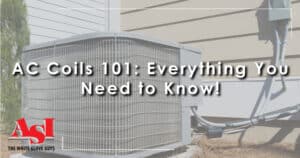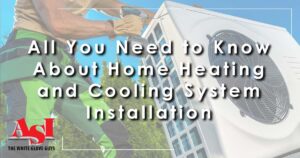We hear people all the time asking if they can perform DIY HVAC repairs. Here’s the thing, just because you can doesn’t mean you should. While there might be a how-to video out there for almost anything, that won’t replace the years of experience, expert training, and top of the line tools a professional HVAC technician has.
Here’s Why you Shouldn’t try to DIY HVAC Repairs
Carbon Monoxide
Central air systems, along with other appliances in your home, are powered by gas. The lines that transport gas from a municipal supply to your home should always be handled by a professional.
A large carbon monoxide leak can come from something as insignificant as a small hole or crack in a gas line. Anything gas related really needs to be left to professionals.
Electrical Issues
Any and all electrical work should be left to professionals. Especially HVAC. The electric used for your HVAC system is strong and has the potential to cause a lot of harm.
All HVAC technicians at ASI go through extensive training before they can even work on an HVAC system. We make sure to teach them every precaution when it comes to electric work.
Unless you are a professional electrician, we can’t recommend trying to work on the electricity in your home.
Voiding Insurance Policies and Warranties
One of the fastest ways to render your warranty useless is to try and fix something on your own. Most warranties, and home insurance policies, have policies saying only a professional and certified technician can work on your system.
What happens when you try to repair something, and it doesn’t work? You can’t go to your homeowner’s insurance provider. They usually also have clauses saying any work needs to be done by a licensed and trained professional.
DIY HVAC Repairs that Usually Go Wrong
Changing the Thermostat
One of the most unassuming HVAC related tasks is also one that could go very wrong. We’re talking about changing the thermostat.
When it comes to smart thermostats, it’s crucial to speak with an expert. Some HVAC systems are old enough they can’t “talk to” smart thermostats. This usually leaves the homeowner with a useless, and expensive, thermostat.
Blocking Room Vents
For some reason it’s become a somewhat standard practice for homeowners to block the vents in rooms they don’t regularly use. We’ve heard it’s because they think they can save money.
This is a very bad “fix.” Instead of saving money, it does the opposite.
Even if a vent is closed, your HVAC system will make the same amount of air needed for the whole house. When a vent is closed, that air needs to go somewhere.
When it can’t access any intended space, the excess air can cause the pressure in your HVAC system to rise and tear a hole in your ductwork.
Even the smallest cracks and fissures in your ductwork can allow dust, dander, and other indoor air contaminants to get in. Those indoor air contaminants mix with your treated air and make it dirty.
Cleaning the Outdoor Condenser
Please do not take out the hose and just spray at the outside of your condenser. This does nothing to help clean your condenser and could damage the coils.
When a technician cleans your condenser, they hose it out from the inside. Washing the condenser from the inside out is the way to clean it without damaging the coils.
We still don’t recommend doing this on your own because your first need to disassemble part of the condenser, then correctly put it back together.
Instead of cleaning the condenser, the pressure from a hose can bend and twist the delicate coils housed inside the condenser. This action could result in a broken condenser.
What You Can Do
Clean Around the Condenser
Simply clearing any dust or debris from the area around it will be enough to keep everything in good working order.
Change the Air Filter
We’ve said it before and we’ll say it again, the best thing you can do for your HVAC system is to regularly check and change the air filter.
The experts at ASI say it’s best to change the air filter at least twice per year. Once in the spring and once in the fall.
Homeowners should also check their filter if they live close to a construction site and after fire season.
Battery Checks
Carbon monoxide detectors are essential for home safety. However, they need to work. A great task you can do yourself is to check the batteries from time to time.
The same goes for your thermostat. Without a functional thermostat, there’s no way your system could work.
ASI provides the best professional AC repair and service in San Diego. Call the number at the top of the screen, or click here to schedule an appointment online.












